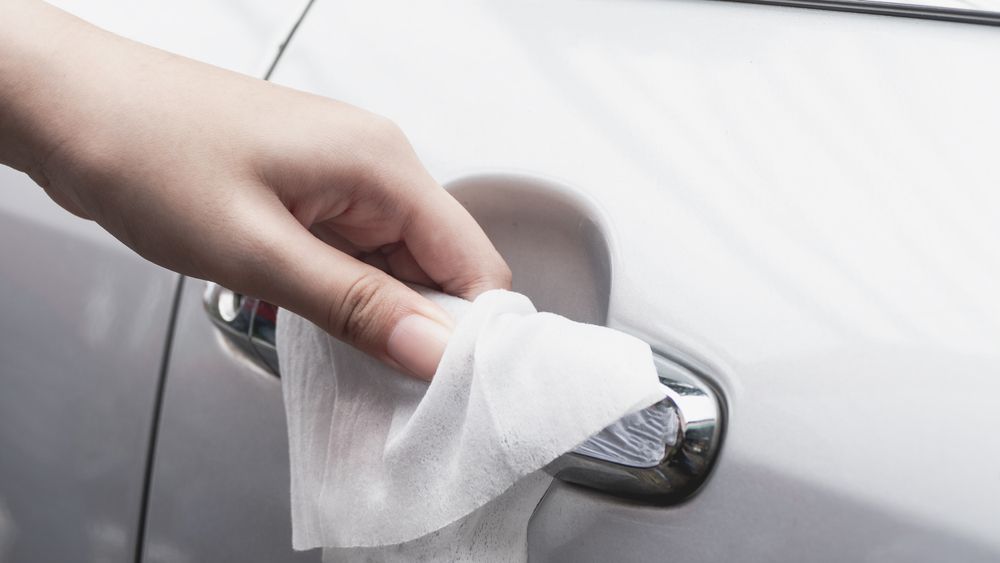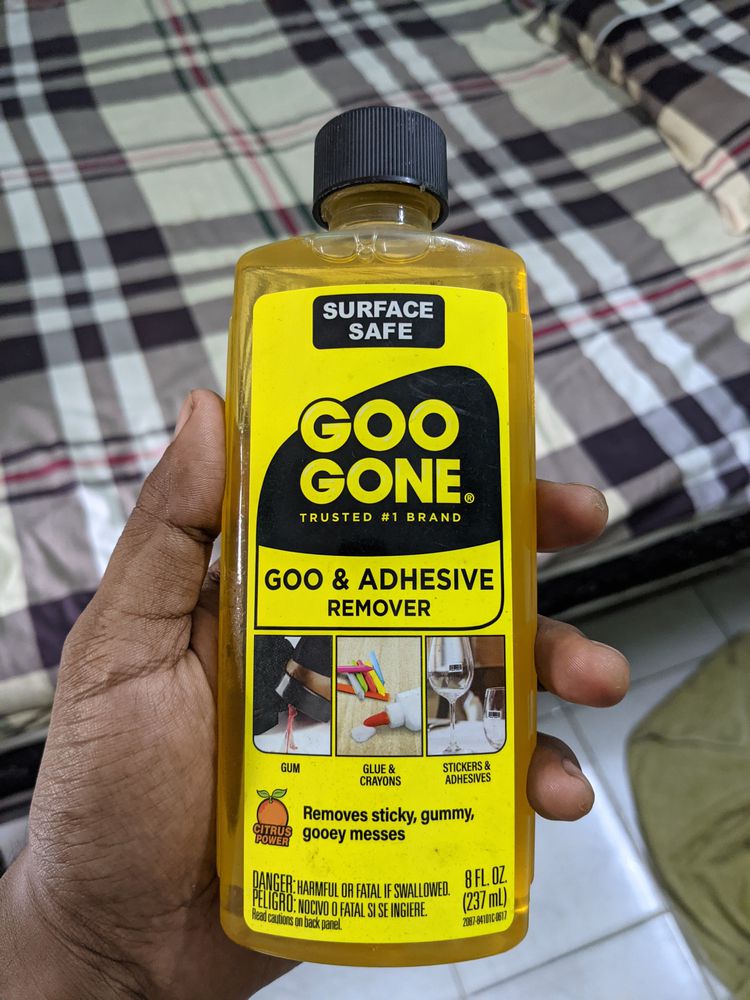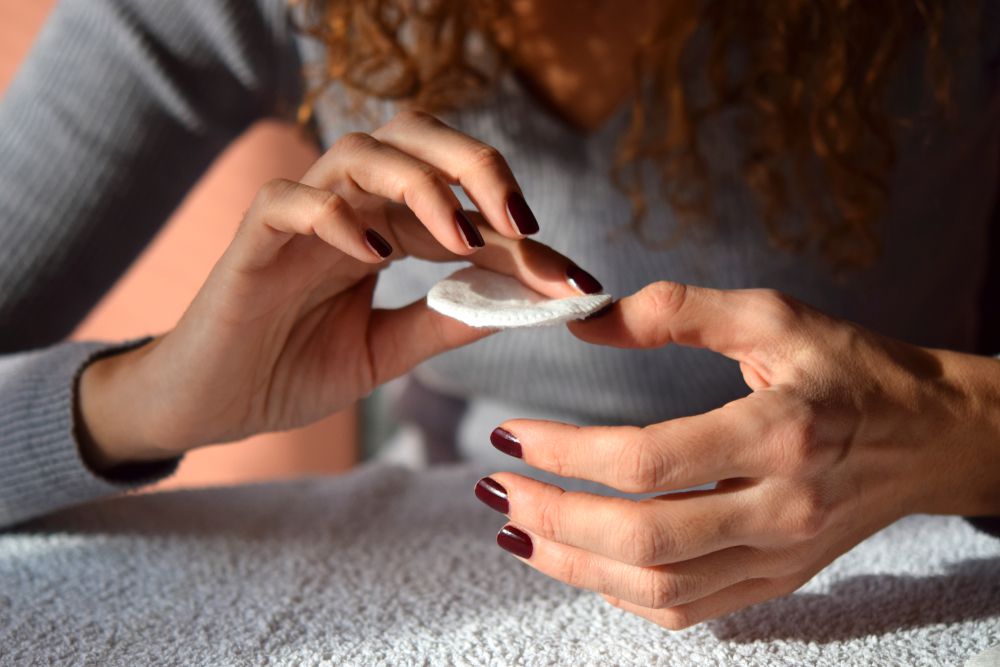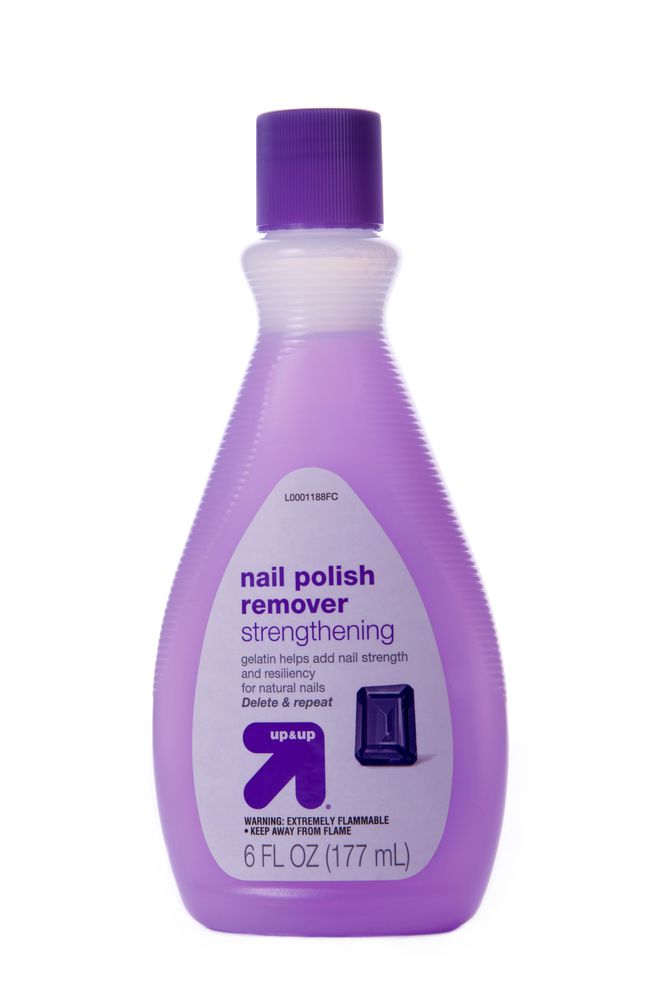Even with a new paint job on your car, a stubborn stain or other
imperfection can appear.
And when this happens, you may be tempted to use acetone on your car
without realizing what a strong solvent it is and how it can damage car
paint.
No, acetone is not safe on car paint
because the chemical formula - similar to nail polish removers - is
capable of removing the car wax coat, clear protective layer, and the
underlying paint layer.
And aside from the potential car surface damage when you try to remove
stains, you could expose yourself to harmful fumes if you don't use
acetone safely (especially if you're using concentrated acetone).
Keep reading to learn how using acetone on car paint for scratches and
stains causes damage, the associated safety hazards, and other details.
We'll also detail the different types of solvents and cleaning agent
products that are safe on car paint and clear coat, as well as the
step-by-step ways to remove adhesive, stains, and scratches safely.
 Wiping a door handle with acetone.
Wiping a door handle with acetone.
What solvent is safe on car paint?
There are luckily a few solvents that are safe to use on car paint and
clear coatings so that you don't end up stripping the layers.
The following are more natural or gentler choices that you probably already
have in your kitchen or pantry:
-
Dish soap and water
-
White distilled vinegar
-
Goo Gone
-
Automotive adhesive cleaners
-
WD40
-
A dilute solution of rubbing alcohol with water
How To Remove Adhesive From Car Paint
If you want to remove adhesive from car paint - whether left behind from a
sticker or pesky tree sap - you need to use specially formulated automotive
adhesive removers, Goo Gone, mild soap and water, or white vinegar.
You don't want to use acetone on car surfaces if you can avoid it.
Even though you may wonder can acetone remove tree sap? and some
people will swear by it, it could ruin your car's paint job.
The following are step-by-step instructions for the different types of
acceptable solvents to remove adhesive from car paint without stripping the
car's surface or doing other damage to car paint.
Removing Adhesive with Dishwashing Liquid
If you don't want to damage car paint and other coatings, you can use some
dish soap (such as Dawn or Palmolive) with warm water to loosen the
adhesive on your car's paint or plastic parts.
Instructions:
-
Gather a clean rag or soft cloth, a bucket of clean water, and a bottle
of dish soap
-
Mix some soap into the warm water and create a soapy solution
-
Dip the rag in the solution and gently rub the adhesive in a circular
motion to loosen it
-
Repeat this process, being gentle against the car paint, until the
adhesive starts to fall off the surface
-
Once the adhesive is all gone, use clean water (without soap) to wash
the car paint clean
-
Allow the car paint surface to air dry or wipe it down with a clean,
dry cloth
 Goo Gone is great for removing adhesive off a car.
Goo Gone is great for removing adhesive off a car.
Removing Adhesive with Automotive Adhesive Cleaner
Another acceptable adhesive remover that won't damage car paint but is good
at removing stains is an external automotive cleaner like
3M Adhesive Remover
spray or Goo Gone Automotive Spray Gel.
The solvents in this product are non-abrasive and designed to use on most
cured auto paint without taking a few hours to complete the job.
Here's how to use it on your car so that it doesn't damage the clear
coating or paint underneath:
-
Make sure you're in a well ventilated area to exercise caution
-
pray the 3M on the adhesive-stained area of the car surface
-
Use a clean cloth to wipe the solvent gently against sticky residue
-
Give the product a few minutes to start dissolving the residue
-
Gently wipe the solvent away
-
Repeat the process until the residue is gone
-
If there is still residue left behind, use soapy water to finish the
job
-
Make sure to wash and dry the car surface when you're done
Removing Adhesive with Vinegar
Next, consider using white vinegar as a natural solvent for adhesive
residue on your car.
White vinegar is acidic and can easily dissolve residue from stickers and resins.
Use it to remove tree sap and other adhesives without ruining your car's
paint job by taking the following steps:
-
Dip a soft rag in some distilled white vinegar
-
Press the wetted rag against the adhesive residue on your car
-
Hold the rag in place to allow it some time to dissolve the sticky
residue
-
Gently rub at the surface to remove the loosened residue
-
Repeat the process as needed
-
Make sure to quickly wash the surface clean with soapy water and rinse
then dry when you're done
 Nail polish remover is generally not recommended on car paint.
Nail polish remover is generally not recommended on car paint.
Is it safe to use nail polish remover or acetone on car paint?
It may not be surprising to you that nail polish removers are extremely
effective at removing paint, especially if you've seen them used in nail
salons.
This is why it should also not come as a surprise that acetone damages car
paint, even if you've just used a tiny amount on a cotton ball.
In addition to being unsafe for your car's paint job, acetone is also
unsafe for prolonged human exposure.
Health Concerns of Acetone
One key reason not to use nail polish removers or acetone on car clean-up
jobs is that acetone fumes can cause maladies such as nausea, vomiting,
external and internal irritation, and even fainting.
These concerns are even more pressing if you're using acetone in a poorly
ventilated area, according to the
Delaware Health and Social Services.
How will acetone damage car paint?
Acetone is an incredibly powerful solvent and degreaser that can
dissolve many substances
, from plastics to synthetic fibers, rosin, paints, varnishes, and even
super-glue.
When used on car paint, it can:
-
Dissolve the protective clear coating
-
Strip the paint job
-
Make it more likely for your car to get scratched and eventually form
rust
 Bottle of nail polish remover.
Bottle of nail polish remover.
How long does it take for acetone to damage car paint?
It doesn't take long - a mere 30 minutes - for acetone and nail polish
remover products to begin its paint removal and damage to your car's
surface.
You definitely don't want to expose the solvent to your car for any longer
than that, if you're going to use it at all.
This is why it's also important to thoroughly clean acetone off of the
car's surface immediately after applying it so that it doesn't continue to
dissolve essential coatings.
Is acetone good for car scratches?
Although acetone may seem like a viable option to smooth out a scratch on a
car surface, it will actually do more damage than good in the long run.
Due to its strong solvent quality, acetone is more likely to start
stripping away more paint and leaving the car's metal vulnerable to rust.
And this is the opposite effect that you want to have when fixing a
scratch.
This is why you should always stick to proper scratch buffers and removal
products like car polish.
How do you remove car scratches with acetone?
If you absolutely are set on using acetone to remove a car scratch, keep
the following tips in mind so that you can avoid further damage to your
car:
-
Only use a tiny amount of acetone on a small cotton swab
-
Only apply the acetone to the affected scratch (and no surrounding
areas)
-
Do not leave the acetone on the scratch for longer than a few minutes
-
After you smooth out the scratch, immediately clean off any remaining
acetone so that it doesn't dissolve more of the surface
Will acetone remove automotive clear coat?
Acetone can and likely will remove the automotive clear coat from your car,
which is how it eats through to the paint underneath.
Think about it in terms of nail polish - acetone can remove the clear
coating on your nails just as it can do the same on a car.